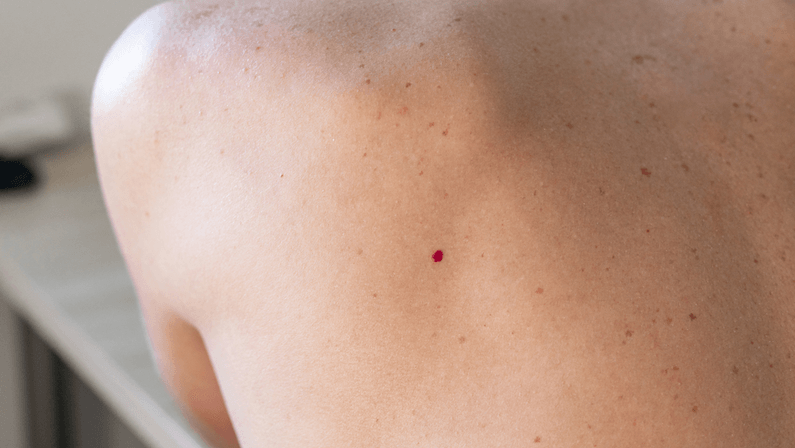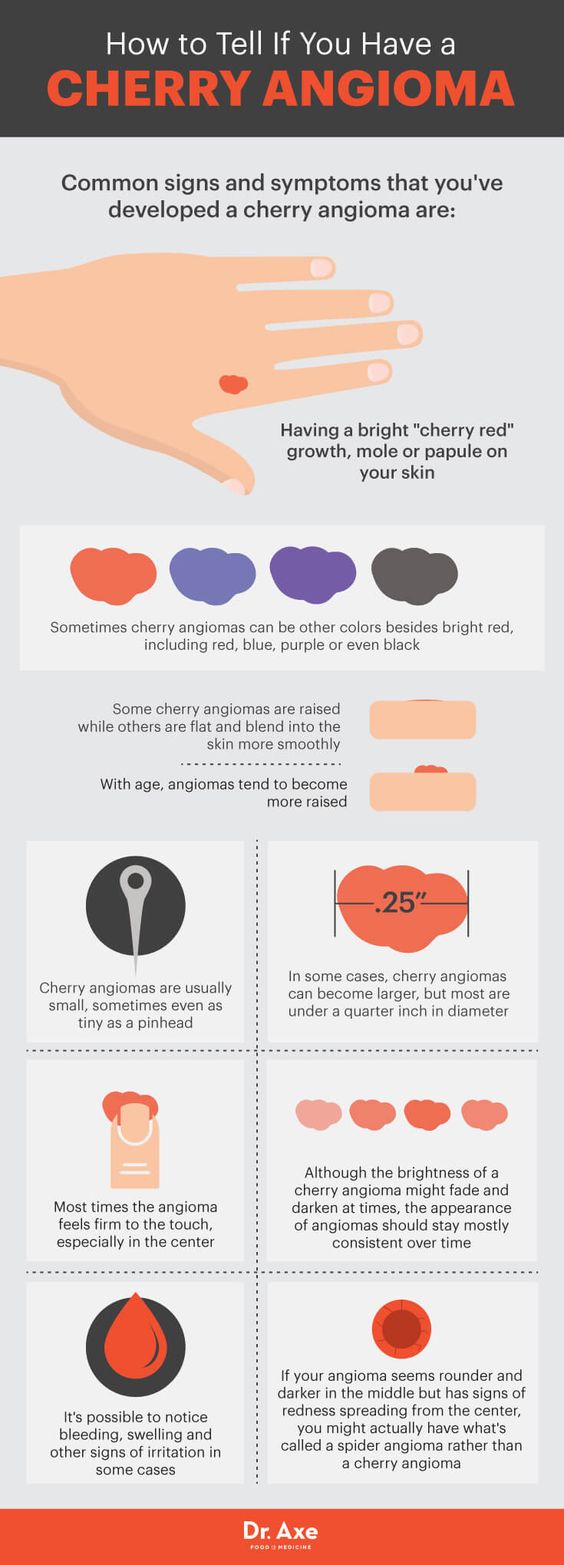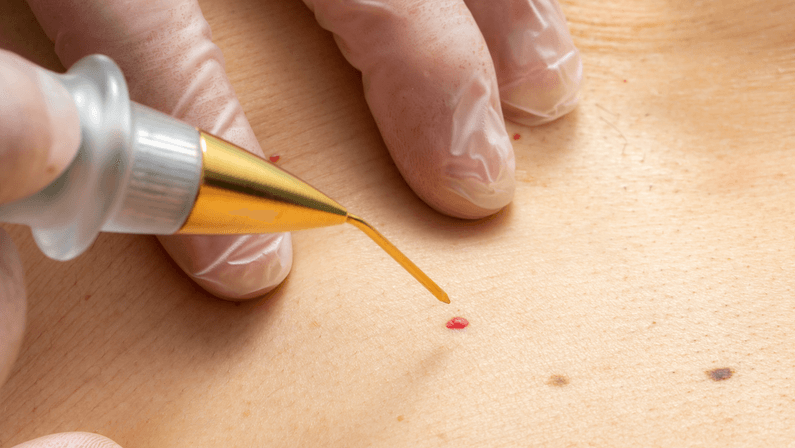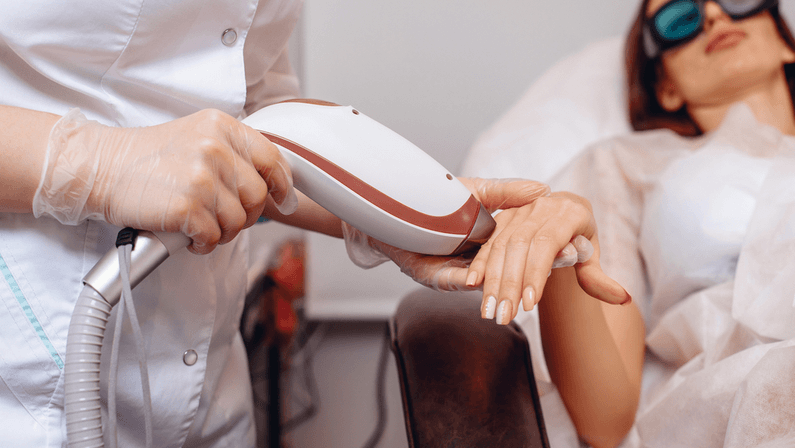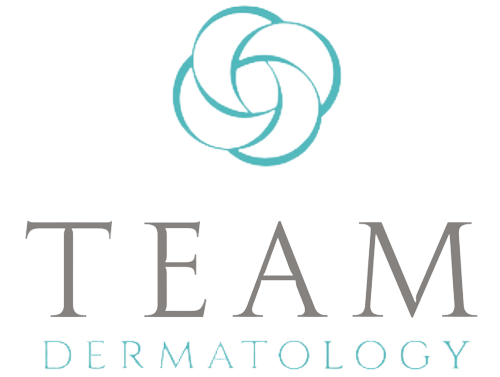Cherry angiomas are common benign tumors that can be found on any part of the body but are most often seen on the trunk and limbs. If you’re one of those people, read on for a few ways to get rid of cherry angiomas.
In this blog, we will provide a walkthrough of these pesky red bumps. From causes to treatment options, we’ve got you covered. So sit back, relax, and let us help you take care of business!
Table of Contents
What Are Cherry Angiomas
Cherry angiomas are benign (non-cancerous) tumors that develop when tiny blood vessels in the skin grow larger and form a cluster. They are also known as Campbell de Morgan spots, senile angiomas, and cherry hemangiomas.
These bright red bumps are usually round or oval-shaped and can range in size from a few millimeters to a few centimeters. They can occur anywhere on the body but are most often seen on the trunk, limbs, and face.
Cherry angiomas are very common and tend to occur more often as we age. In fact, it’s estimated that up to one-third of adults over the age of 30 have at least one cherry angioma.
What Do They Look Like?
Cherry angiomas are usually bright red or purple and can range in size from a few millimeters to a few centimeters. They can be found anywhere on the body, but are most commonly seen on the trunk and limbs.
What Causes Cherry Angiomas
The exact cause of this skin condition is unknown, but they’re thought to be associated with aging and sun exposure. They tend to run in families, so there is a genetic component as well.
Symptoms Of Cherry Angiomas
Cherry angiomas are usually harmless and don’t cause any symptoms. However, some people may find them unsightly or bothersome.
In rare cases, this skin growth can bleed if scratched or bumped.
If you’re concerned about cherry angioma or any other skin growth, it’s essential to see a board-certified dermatologist for an evaluation.
Are angiomas dangerous? They are not dangerous and generally don’t cause any symptoms. However, they may bleed or itch in some cases, as mentioned earlier.
Cherry Angiomas and Skin Cancer
Cherry angiomas are benign tumors, so they’re not cancerous and don’t increase your risk of developing skin cancer.
If you have a large number of this skin growth or if they change in size, shape, or color, it’s important to see a board-certified dermatologist for an evaluation.
When To Seek Medical Treatment
If you have a cherry angioma that’s growing, changing color, or bleeding, it’s important to seek medical treatment from a board-certified dermatologist. These tumors may be a sign of underlying medical conditions and need to be evaluated in some cases.
How To Get Rid Of Cherry Angiomas
Most angiomas don’t require treatment, but some people may choose to have them removed for cosmetic reasons.
If you’re considering cherry angioma removal, options include:
Electrocauterization
This treatment is also called electrodesiccation. This is often used for benign tumors, serious skin cancers, and pre-cancers. As with excision, this method can cause some discomfort after the procedure. Electrodesiccation leaves a white scar.
For this procedure, you’ll also have a grounding pad placed somewhere on your body to ground the rest of your body from a surge of electricity.
Cryotherapy
This treatment is also called cryosurgery. This involves freezing the cherry angioma with liquid nitrogen. This causes the angioma to blister or peel before falling off. In some cases, the angioma may scab before removal. This treatment might be less effective than others and may leave a scar.
Shave Excision
This is a surgical procedure that involves cutting out the cherry angioma. This method uses a scalpel to shave the cherry angioma off in thin slivers until it’s gone.
Laser Therapy
This uses intense pulsed light (IPL) to destroy the cherry angioma. A laser passes through the skin, and the blood vessels in the angioma absorb the beam. After the treatment, the angioma should disappear, or turn gray or another darker color.
On average, a person needs two treatments to experience the best results. However, results vary by skin tone. A single treatment may be enough to treat smaller angiomas.
How to Prevent Cherry Angiomas
Since the cause of this skin condition is unknown, there is no certain way to prevent them. However, some ways to minimize the risks include:
- Avoid excessive sun exposure
- Wear sunscreen
- Avoid cigarette smoke
- Quit alcohol
- Take care of your skin by using a gentle cleanser and moisturizer
Consult A Dermatology Expert
Team Dermatology offers various treatment options for cherry angiomas and other various skin conditions. We will work with you to determine which treatment is best for you based on your individual needs.
If you have any concerns about cherry angioma or other skin growth, we encourage you to make an appointment at our locations in Memorial or Sugar Land, TX. We will be happy to answer any of your questions and provide you with the care and treatment you need.
Bottomline
Cherry angiomas do not go away on their own, yet most do not cause serious concerns. If you are bothered by the appearance of these red moles or they are growing, changing color, or bleeding, then you should seek medical advice, diagnosis, or treatment from a board-certified dermatologist.

